A Menagerie of Animals
This week’s lectures, by coincidence, both included animals into their titles – so through this week we negotiated quite a menagerie. On Tuesday 23rd October, Peter Hibbard, MBE, (RAS Shanghai) lectured from the title “More than a Stuffed Bird Show: The RAS Legacy in Shanghai” in which he discussed how, in 1857, the founders of the North China Branch of the Royal Asiatic Society (NCBRAS) embarked on their investigations into China. The Society opened its first building in 1874 with a second building opening in 1933. This building was in many ways a projection of Arthur de Carle Sowerby’s dreams and determination. He was a naturalist, explorer, author, activist, curator of the museum and later RAS President, who decried accusations that the the Society was dull and its museum no more than a ‘stuffed bird show.’ The Society closed its premises in 1952 and Sowerby’s long held dream for the city to have its own modern art gallery was not realised for over 50 years when the Rockbund Art Museum occupied the former NCBRAS building in 2010.
The NCBRAS was re-convened as the Royal Asiatic Society China in Shanghai in 2007 with the ambition of pursuing and enhancing the Society’s original objectives in staging lectures, producing a journal and establishing a library. Whilst an archive has been established, the prospect of re-establishing a museum has yet to be realised.
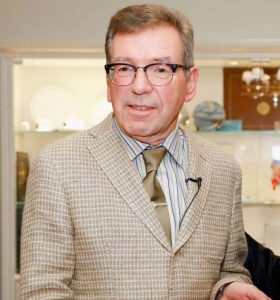
On Thursday 25th October, we welcomed Professor Anna Contadini (SOAS) who lectured on “The Pisa Griffin and the Mari-Cha Lion: Metalwork, Art, and Technology in the Medieval Islamicate Mediterranean”. Her lecture accompanied the book launch of the publication of the same name, edited by Professor Contadini – a beautifully illustrated volume describing the intriguing Griffin and the Lion, their histories and the current research concerning their structure and function, technology, history and art, and comparative studies. We were fortunate to have within the audience some of the contributors to the volume, making for a lively and informative question-and-answer session after Professor Contadini’s illuminative lecture.
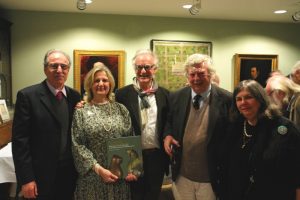
Next week, on Friday 2 November, 6.30 pm, Dr George Michell and Dr Helen Philon will give a joint presentation in the form of a dialogue on their newly published “Islamic Architecture of Deccan India”, illustrated with a selection of photos from the book. We hope that you will be able to join us for this event.
Having started the blog with the title “A Menagerie of Animals” I couldn’t resist the opportunity to show some animals from our own collections. So here for a start is a rhinoceros being ridden by Shiva and Vishnu, accompanied by warriors. This is a pen-and-ink drawing by a Mysore artist, one of six drawings of sculptures and temples at Merkara, Coorg, Harihar and Kadur in Mysore, undertaken in 1846.
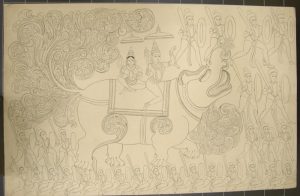
Then a feast of beasts from the Zodiac on a Sinhalese watercolour painting made for Alexander Johnston, c.1810
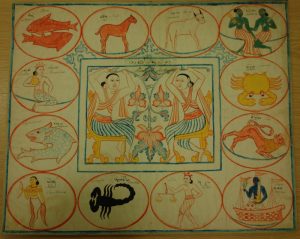
Moving to an English painter, George Chinnery – in the collections we have his oil painting of a “Brahminy bull”, dating to around 1806 and donated by Richard Clarke in 1832. Chinnery left for India in 1802 where he remained until 1825 when he moved on to Macao. There he stayed until his death in 1854.
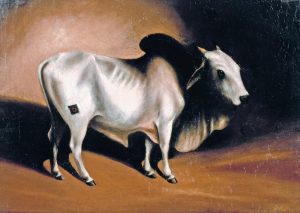
Finally, for the last image we will return to the mythical:
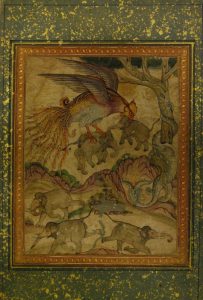
Here we see the Simurgh carrying off elephants from a herd while a dragon coiled around the tree breathes flames. This is one of nine Mughal miniatures formerly in the possession of Major-General John Staples Harriott (1780-1839). On the reverse of the painting is written “The Simurg or Roc of the Arabian Nights”.
